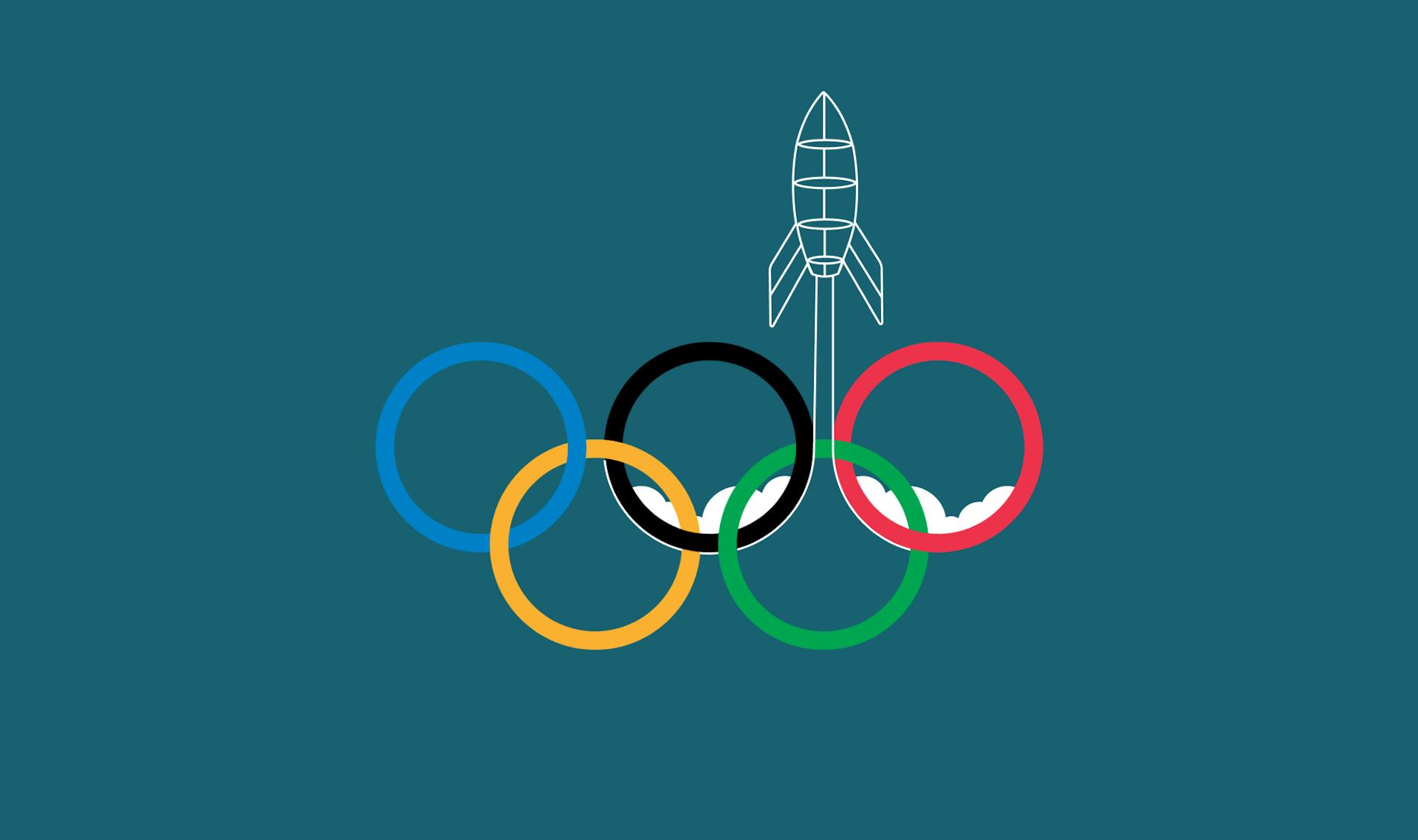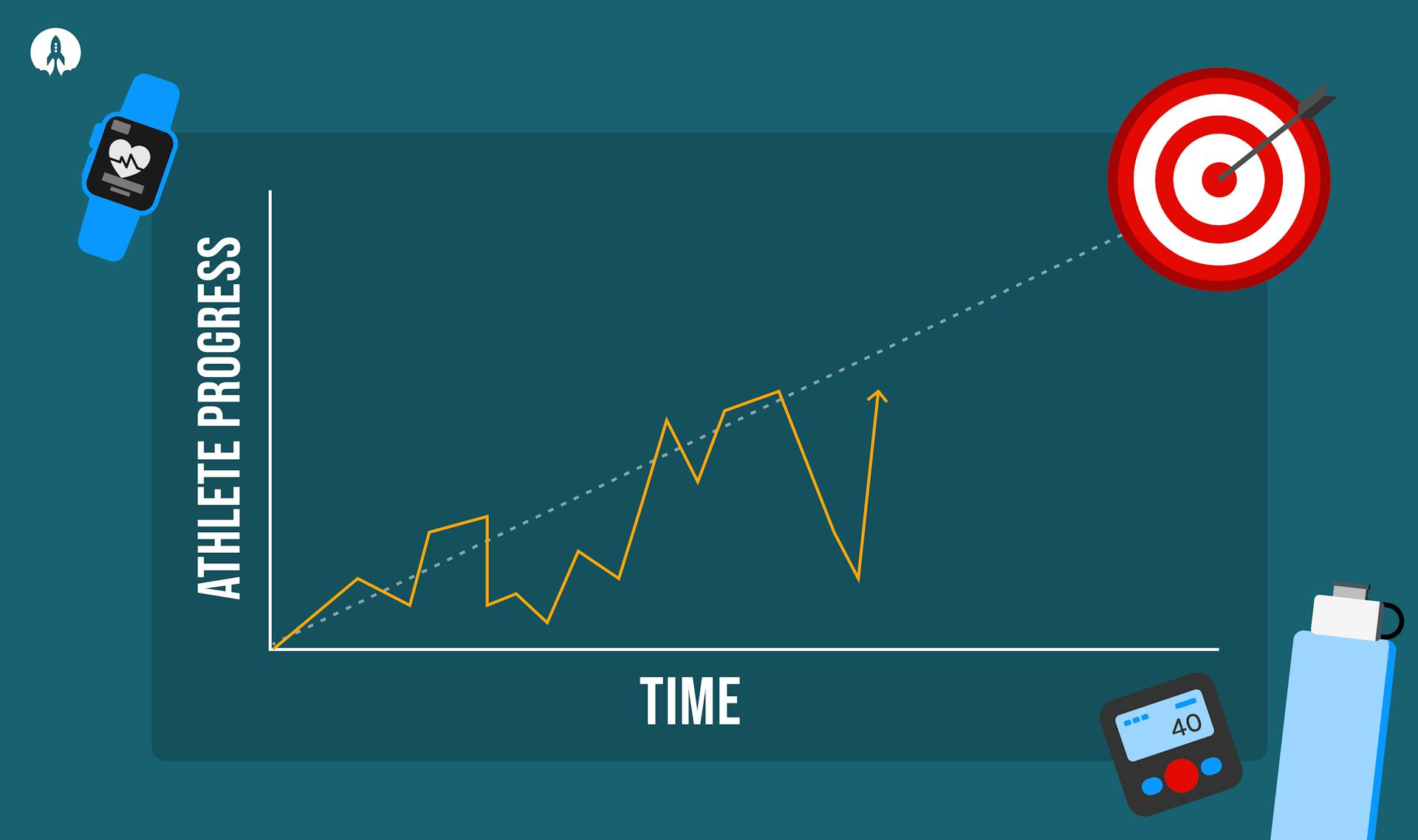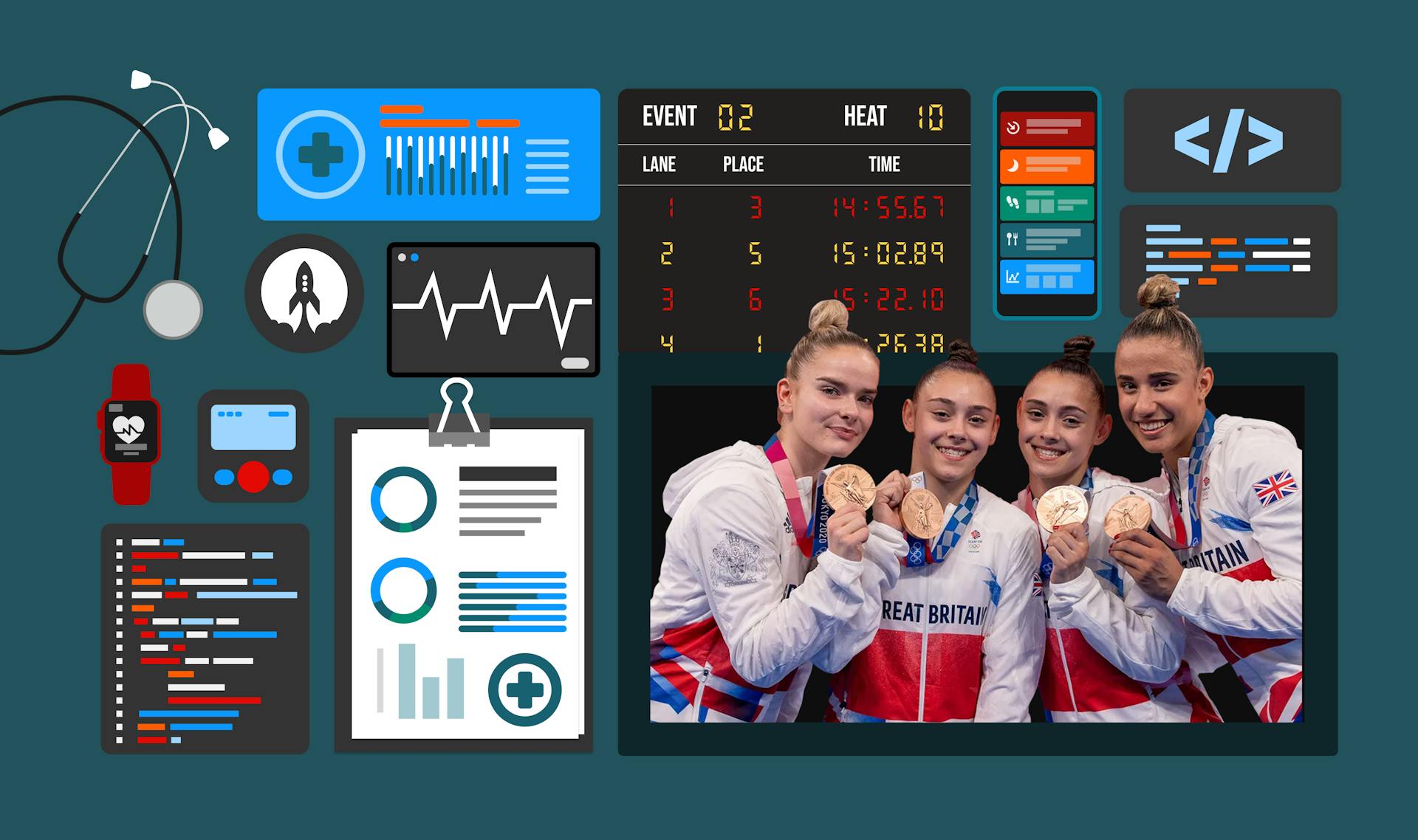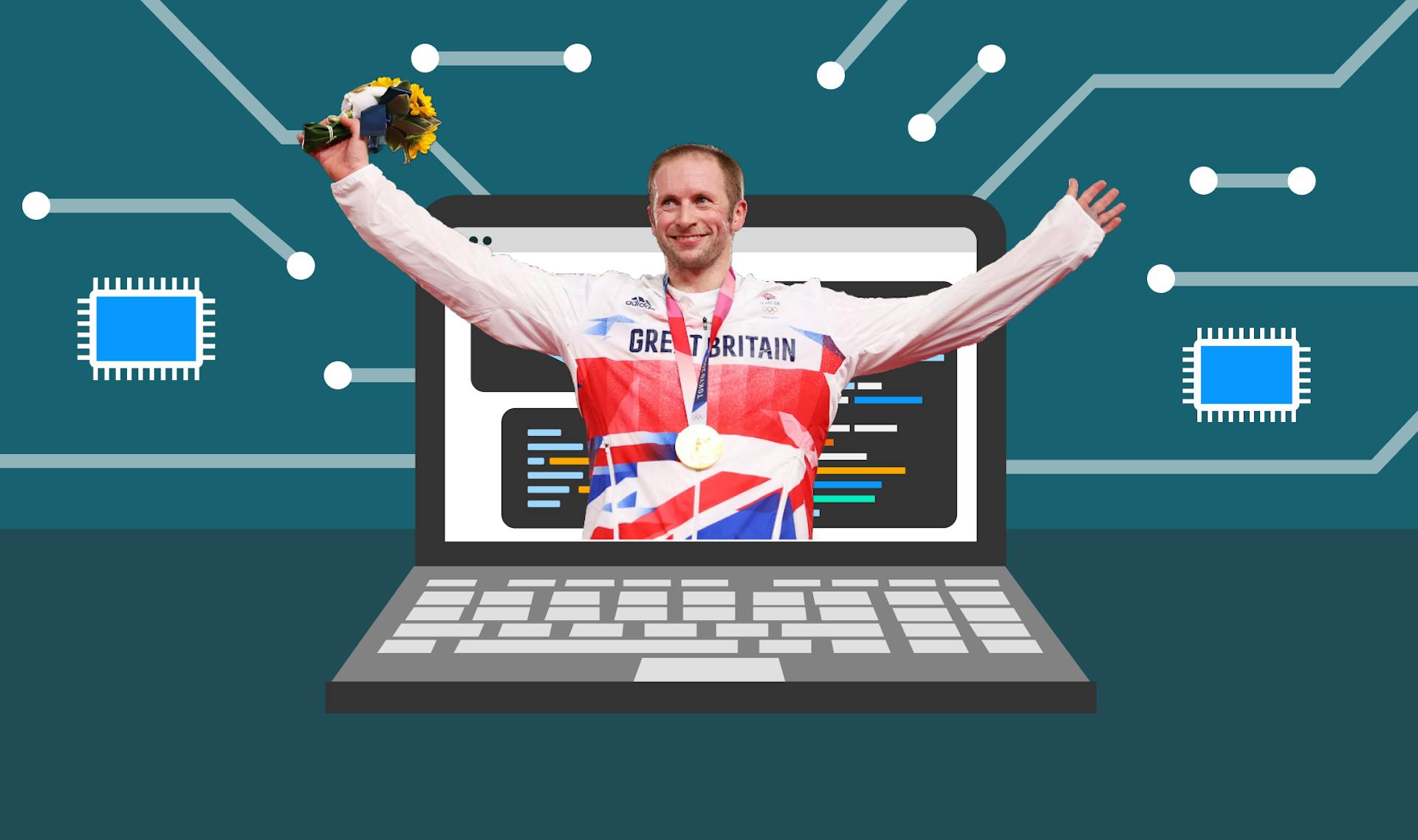Going For Gold: The Software Behind the Success of Team GB

Every four years, the world gears up for the biggest cross-sporting event, where the best athletes in the world fight it out for gold.
To anyone watching, it's a showcase of incredible physical ability on the world stage. But the spotlight reveals only a fraction of the story.
For the contenders, that moment of glory is forged by years of unrelenting training. Days bleed into weeks, then months, then years – all in the pursuit of improvement. Years of careful preparation make this possible.
Today's athletes don't just train their bodies to achieve success; they incorporate technology in many ways. It helps them analyse their performance, find ways to improve, and reach their full potential before reaching the starting line.
In this article, we discuss how tools developed by Rocketmakers help empower TeamGB athletes to be in top form for the Paris 2024 Games.
These tools include the Performance Data Management System (PDMS) for tracking athlete health and Fireball for managing and scheduling innovation projects.
Why Is Technology So Important in Athletic Performance?
Technology has become indispensable for maximising athlete performance in the high-stakes world of elite athletics.
Gold success hinges on an athlete's ability to reach their peak at the right moment, and technology is vital to unlocking their full potential.
Imagine the athlete's preparation as a graph where the X-axis indicates time—the four-year cycle leading up to the competition of their lives and the Y-axis represents performance potential.

Ideally, an athlete's trajectory steadily rises, peaking on competition day.
But the reality isn't so straightforward. Every day presents potential setbacks: illness, injury, overtraining, or suboptimal factors like poor sleep.
These derailments take the athlete off their ideal trajectory, but this is where technology comes in.
Gathering and analysing detailed data on training, sleep, nutrition, and well-being give a real-time picture of their preparation.
The margin between gold and disappointment can be tiny. Technology helps bridge that gap with data analytics that optimise each training day.
The challenge of identifying and reducing performance dips has led to the development of robust systems like the Performance Data Management System (PDMS) and Fireball, which we discuss in more detail below.
The Birth and Evolution of PDMS: Transforming Athletic Performance with Data
PDMS in a Nutshell
PDMS (Performance Data Management System) is a sophisticated software platform for elite athletes and their support teams. It has several core functions:
PDMS gathers a wide range of data, including:
- Medical records and consultations
- Daily athlete input on training, sleep, mood, soreness
- Objective measurements from sensors and wearables
- Holistic insights: It analyses this combined data to give coaches and medical staff a complete picture of an athlete's journey: their fitness, potential setbacks, and progress over time.
With these data-driven insights, PDMS helps in:
✔️ Injury prevention by spotting early warning signs
✔️ Maximising training effectiveness
✔️ Tailoring recovery plans
PDMS can be adapted for different sports and features athlete-focused apps for easy input. It also benefits from continuous development and updates.
💡Key point: PDMS goes beyond tracking metrics. It uses data to tell an athlete’s preparation story, enabling better decision-making for Elite-level performance.
The Origins of PDMS
The seeds of PDMS were sown in 2008 when a member of the English Institute of Sport (now the UK Sports Institute) research and innovation group began exploring new avenues in collaboration with us.
An early prototype focused on innovative ways to visualise medical data, like a 3D view of the body with injury tagging and timelines leading up to world championships and the biggest event every four years.
The proof of concept demonstrated the potential of technology to improve how medical information was tracked and understood. This early prototype laid the groundwork for what would become PDMS.
After London 2012, it became more apparent that poorly designed legacy systems created inaccurate and unreliable data, which had a tangible impact on athlete performance at the games.
It was impossible to find the data to inform decisions such as where the EIS should focus its resources in terms of Athlete Health research, recruitment, development and projects.
There’s no doubt that EIS service delivery was having a big impact on athlete health, but finding quantifiable data to evidence this was a challenge. It was these circumstances that led to the UK embarking on a journey to lead the world in Athlete Health data
Glenn Hunter, head of athlete health in the Research and Innovation Team at the UK Sports Institute, spearheaded a bold move: rebuilding from the ground up.
Drawing on the earlier prototype, together with Glenn, we spearheaded a visionary approach:
🏆 Intuitive design: The focus shifted towards creating a system prioritising ease of use for medical staff and athletes. This aimed to incentivise the input of accurate, high-quality data.
🏆 Long-term investment: Recognising that it would take years to generate enough quality data for advanced decision-making, the UK Sports Institute and Rocketmakers committed to a system built for long-term impact.
This emphasis on quality data and a user-centric approach laid the foundation for the PDMS system we launched in 2014.
Over the last decade, the focus on accurate data input has paid dividends. The UK Sports Institute now has access to high-quality information, driving more informed decisions in athlete performance through data analytics and machine learning.

The Evolution of PDMS
PDMS began as a structured system for capturing medical consultations (the SOAP process) to improve data quality.
💡What is the SOAP process?
The SOAP process is a standardised method for documenting medical encounters. It's used by doctors, physiotherapists, and other healthcare professionals to ensure accurate and comprehensive record-keeping. Here's what each letter of the acronym stands for:
➡️ S - Subjective: This is where the patient describes their symptoms, concerns, and medical history in their own words. It captures how the patient is feeling.
➡️ O - Objective: This includes measurable data collected during the examination, such as vital signs (blood pressure, heart rate), lab results, observations of the patient's range of motion, etc.
➡️ A - Assessment: This is the healthcare professional's working diagnosis. It might not provide a definitive answer immediately, but it identifies potential causes of the problem.
➡️ P - Plan: This outlines the treatment strategy, including further testing, medication, therapy recommendations, or lifestyle changes.
Tracking health trends more closely helps coaches and specialists who work with athletes identify potential issues early on.
This minimises the impact of injuries and illnesses, so athletes can stay focused on their training and be better prepared when it's time to compete.
Prioritising athlete wellbeing isn't just about avoiding discomfort; it's a strategic investment in unlocking their full competitive potential. The PDMS is essential to this.
Currently, the system collects medical records for approximately 1,500 athletes across 40 sports.
PDMS has a user-friendly interface, making it easier to capture information and then present it back quickly in graphical reports that provide a snapshot of athlete availability for training and, longer term, enable us to track and analyse the volume and intensity of their work.
Having all the information available and up-to-date in a single place makes it much easier for the sports science team to support the athletes as they are all working from the same data.
It means the strength and conditioning coaches can use it to inform their work, as can the physiotherapists, physiologists, doctors, and other practitioners who are also part of the multi-disciplinary team
Case study: Respiratory Health in Tokyo 2020
A case study by the UK Sports Institute found that respiratory illnesses caused major setbacks for UK athletes during their pandemic-disrupted preparation for Tokyo 2020.
The impact was staggering: data showed 2,500 illnesses leading to 20,000 lost training and competition days over five years for 1,000 athletes.
This made respiratory illness the most significant health challenge detected within the system.
Using the insights from the Performance Data Management System (PDMS), a major project was launched. This collaboration aimed to:
- Identify athletes susceptible to respiratory illness.
- Optimise care through targeted assessments.
- Reduce impact with winter illness campaigns and preventative measures.
The results were impressive:
✔️Improved athlete availability: Athletes experienced a significant reduction in training days lost due to respiratory illness, decreasing from an average of 9 days to less than 6 days per illness.
✔️Reduced impact on performance: The overall burden of respiratory illness on athlete performance decreased measurably.
The key takeaway here is that data-driven insights from PDMS led to a targeted intervention that measurably improved athlete health and performance readiness.
Harnessing the Power of Athlete Experience
A pivotal evolution of PDMS was the creation of the Athlete AER (availability, effort and recovery) monitoring app. One of the biggest insights applied during its development was the need to capture athletes' subjective experiences.
This need was incorporated into the app's design, giving athletes a voice and adding their thoughts, feelings, and training insights into the mix.
For example, while your smartwatch tracks sleep duration, it doesn't tell you how rested you feel and whether you're ready to tackle your training.
PDMS recognises the crucial importance of measuring this subjective data—how an athlete feels can be as important, if not more so, than objective sensor readings.

How Does It Work?
PDMS combines athlete-supplied information with medical records, plotting this data on a timeline. This gives coaches and medical staff a holistic view of an athlete's history, real-time fitness, and potential risks, allowing them to optimise training for peak performance and injury prevention.
For urgent issues, PDMS sends alerts (with thresholds customisable for each athlete), ensuring immediate attention. This focus on subjective data, alongside objective measurements, is intentional.
Tracking elite sports performance involves the analysis of enormous amounts of data, but what makes PDMS different is that it recognises that context is everything.
Without context, data can lead decision-makers astray, causing them to fixate on the wrong metrics or miss critical issues lurking beneath the surface.
For example, even though technology makes it possible to determine that an athlete's training session performance is improving, it offers no insight into the factors driving that improvement (sleep, mood, recent injuries, travel, etc.).
PDMS, however, transforms raw data into a story about the athlete's journey to competition, revealing insights that simple performance metrics might miss.

PDMS has been a real game changer for us daily with our training. It’s helping us log the training sessions that we’re doing and also flag any potential injuries or illnesses that might be coming, so it’s crucial to our training.
I think PDMS has been crucial in the run-up to Rio, in particular with logging our grip-strength scores every day, it allowed me to identify when my shoulders might have been a bit tight, and get the physio before the problem had occurred, so it was crucial in being an indicator of a potential injury in the run-up to Rio.
For me, as an athlete, I think PDMS has been a natural step forward in terms of our daily training and allowing us to log everything, look at our training loads across a whole week, and compare with what was prescribed, so it’s allowed us to look at what we’re doing, as opposed to what was prescribed and that’s been a real game changer for the staff in planning the whole training year.
Increased Scope
Over time, PDMS has continued to expand in scope, adding specialised subsystems to address new challenges:
➡️ Nutrition: A comprehensive system allows nutritionists to design custom diets for athletes. Individual and team athletes can photograph and submit their meals to analyse calories, protein, and other key nutrients.
➡️ Travel and jetlag: Recognising the severe impact of travel (especially long-haul flights) on performance, a subsystem was built to address jetlag specifically. This new feature was essential for optimising athlete readiness at Tokyo 2020.
➡️ COVID tracking: A bolt-on feature was developed to help recognise early signs of COVID-19 based on athletes’ reporting. This system streamlined communication with medics and coaches, helping proactively manage potential infections.
ℹ️ The Ineos Grenadiers turned to Rocketmakers for a critical COVID-19 wellbeing app – delivered in just two weeks! Discover how we did it in the full case study.
PDMS has kept expanding its functionality – but it doesn’t stop there – it undergoes continual technological improvement. Core parts of the system have been updated and modernised over the decade, ensuring it remains efficient and in step with current technologies.

PDMS is a perfect example of how software for elite performance must be adaptable. It started with a core mission (improving data quality) and strategically expanded to address new needs while undergoing regular technical upgrades to maintain peak performance.
The Impact
Team GB's success story is inseparable from the Performance Data Management System (PDMS). Its adoption accelerated after Rio 2016, where PDMS insights fueled their record-breaking 67 medal haul, including 27 golds.
Since then, more national governing bodies have integrated the system, and today it is an integral part of elite sports management across the UK.
The adoption of PDMS paid off. At the 2018 Australian Commonwealth Games, England soared to 136 medals, including 45 golds. This stellar performance came just one gold shy of the record for a non-host team!
Team GB continued the momentum at Tokyo 2020 (2021), securing 64 total medals and 22 golds—their second-best performance at an overseas games. Can they top that in Paris 2024? We look forward to finding out!
This groundbreaking work hasn't gone unnoticed. Rocketmakers was honoured with the prestigious Queen's Award for Enterprise (Innovation) in 2018, primarily for the development of PDMS.

Fireball: Powering British Cycling’s Marginal Gains Philosophy
The British cycling team was an early adopter of PDMS and it was instrumental in its development. They continue to collaborate with us on innovative projects.
Over the last decade, British Cycling has become famous for its "marginal gains" philosophy pioneered by performance director Sir David Brailsford.
This approach involves breaking down every aspect of cycling into the smallest possible components—from bike design to athletes’ clothing—and seeking a tiny (even if only 1%) improvement in each area.
When combined, these micro-improvements can make a significant impact on performance overall.
We collaborated with British Cycling to develop a platform called Fireball to manage the planning and scheduling of these complex improvement projects. This system has now been adopted by multiple other sporting bodies, in collaboration with the UK Sports Institute.
Here’s a breakdown of how it works, using British Cycling as an example:
Project Management for World Championship Success
British Cycling’s path to the Games is paved with a multitude of projects, each with unique timelines and dependencies. Some projects can only begin once others have been finished or partially completed.
This interconnected web creates a complex scheduling challenge. That's where Fireball becomes invaluable. It helps in two important ways:
➡️ Strategic planning: Fireball aids in determining the optimal start and end dates for each project. This ensures they are all completed within the cycle while factoring in those dependencies, building up to those crucial World Championship events.
➡️ Adaptability: Fireball facilitates project tracking and deadline management. This allows for adjustments based on real-world testing, ensuring that innovations are competition-ready by the time the four year cycle completes.
Progress Tracking
Fireball provides a clear view of all 150+ projects and whether they're progressing on target. This tracking allows teams to spot potential issues early on and take corrective action.
Learning from the Past
Fireball doesn't just manage the present; it helps teams tell the story of their journey. By capturing details and outcomes from all the projects in a cycle, Fireball provides a "retrospective" look to help refine strategies for the next world championship event.


The marginal gains philosophy requires meticulous planning and execution. Fireball provides the tools to manage this complexity, allowing elite sports programs to analyse their past performance and continually improve,
Final Thoughts
Elite sports is a relentless quest for improvement, driven by dedication, innovation, and the power of insight.
PDMS and Fireball are just two examples of how technology changes the game. By capturing detailed data, from an athlete's physical performance to their subjective experiences, these systems unlock the potential for continuous optimisation.
Technology and data analysis have become indispensable tools in elite sports. Over the last decade, the UK's impressive medal hauls showcase the impact of systems like PDMS.
As we lead up to Paris 2024, technology continues to push the boundaries of performance. PDMS and Fireball demonstrate how the UK is not just competing but also leading the way in the ongoing quest to improve continuously.

👋 We’re Rocketmakers
If you're looking to harness the power of technology for your sports organisation, Rocketmakers is an expert partner in innovative sports technology projects.
Contact us to discuss customised solutions to elevate your athletes’ performance and achieve your goals.



